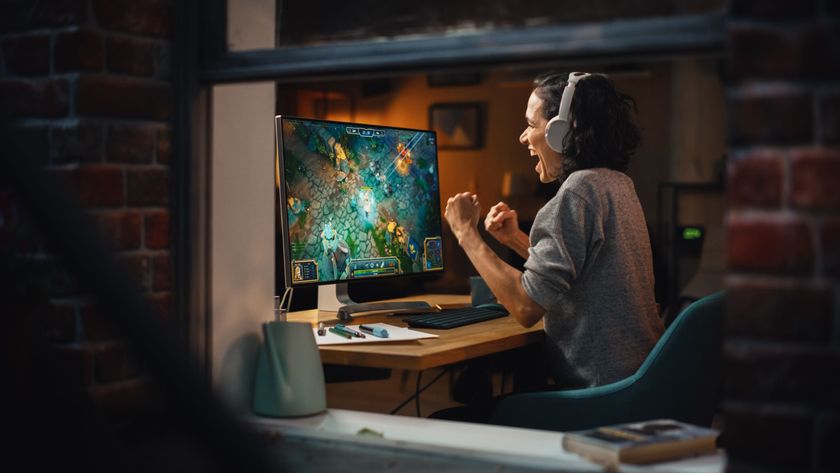Build a DX10 rig for under £176
How to build a massive DX10 gaming machine without mortgaging the missus
Now while it's true that this is a DX10 capable card, let's be a little realistic here. At one sixth the price of the 8800GT, you sure ain't going to be playing Crysis on a 24-inch widescreen monitor, with all the effects turned on.
Then again, that's a struggle for some SLI setups. However, it should be able to run a reasonable res of 1024x768, without too many hiccups.
Spend a few pounds more, and you have the choice of the 8500GT at around £33, or if you really want to splash out, there's the 8600GT for £39. At each level you will get better performance, but you need to keep your expectations in check.
Memory
Memory prices have tumbled recently and the old rule applies: buy as much as you can afford. While the biggest, baddest games rigs on sale might all be using DDR3, at the moment, it's massively over-priced for the performance gain. DDR2 still rules the roost and it's absolutely dirt cheap.
If you're running XP you could probably get away with 1GB, but we'd recommend 2GB for best performance. If you're unlucky enough to be running Vista, then 2GB is essential. If your motherboard supports dual channel, and most of them do, then buying two 1GB sticks will give you better performance than a single 2GB stick.
Forget all the gimmicks, such as heatsinks and flashing lights, and get the fastest memory your budget can stand, and which your motherboard supports. With this system we've gone for DDR5300 (667MHz), which can be picked up for just over £12 per 1GB stick.
Get daily insight, inspiration and deals in your inbox
Sign up for breaking news, reviews, opinion, top tech deals, and more.
It's always been said that the more memory you fit, the better, which while true when prices were high, is no longer the case. If you are running a 32-bit version of Windows, then the maximum amount of memory that Windows can address is around 3.5GB.
If you buy 4GB, you're wasting your money. However, the 64-bit versions of Windows can use the full 4GB and more, but if you go down this path you will probably find yourself in a world of driver incompatibility pain, which we wouldn't wish on anyone.
Hard drive & Optical drive
Of course, playing lots of games means you need something to install them with, because despite Valve's best efforts, not everything is available through Steam (yet). A hard drive will also be handy. Despite Blu-ray winning the HD war, no one actually cares.
If you want to fit an HD drive to your PC, then you are clearly mentally challenged. Not only are they over-priced, few people are actually going to watch HD movies on a piddly little computer screen, when there's a large HD TV in the living room.
In addition, memory sticks have such large capacities, that burning DVDs is pretty pointless these days, although CDs do still have their uses. So, we've chosen a DVD-ROM drive that will read, but not record DVDs and which will happily burn every CD format.
Of course, this had nothing to do with the price being a measly £9, oh no! If you really need DVD writing capabilities, then you can get this by spending just £5 more.
In terms of performance, many SATA II drives are pretty even. Even if you pick a slow drive, it won't affect your actual gameplay. It will just slow down the loading times a tad, but that's hardly a major issue.
We reckon Samsung are among the most reliable drives, and although they normally command a premium, you can pick up this 250GB drive for well under £30, which is an absolute bargain.
Case and PSU
If you want a well-designed case, with plenty of fans, numerous ports and plenty of upgradability, then it's easily possible to spend more than our entire budget on such a beast.













